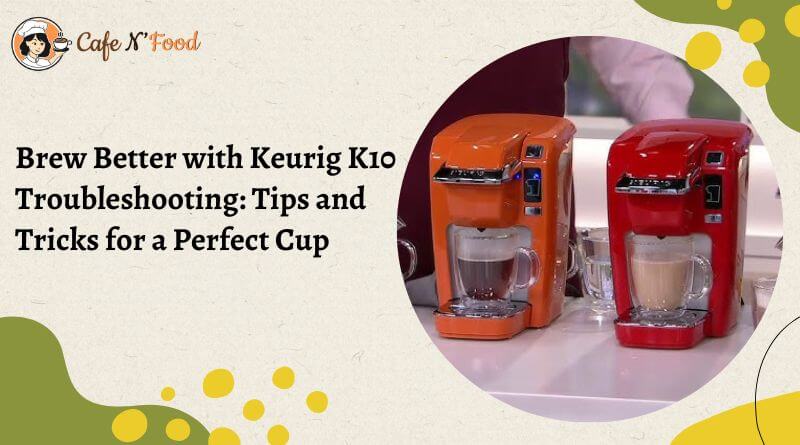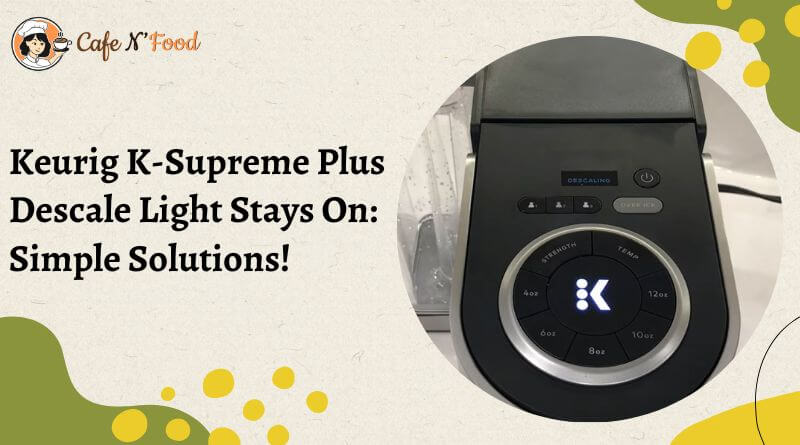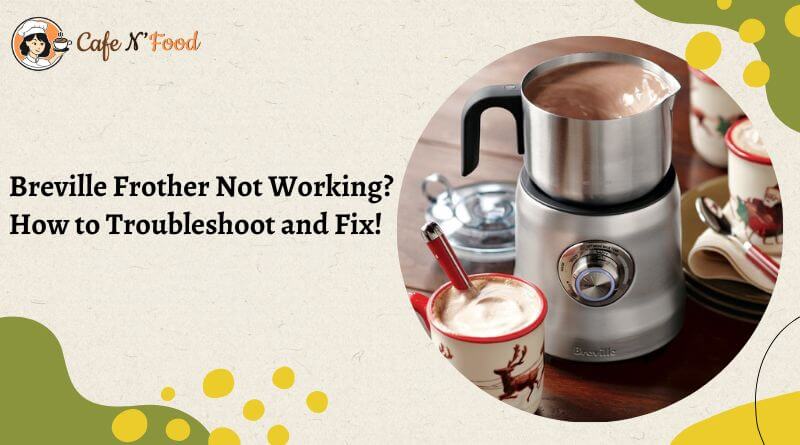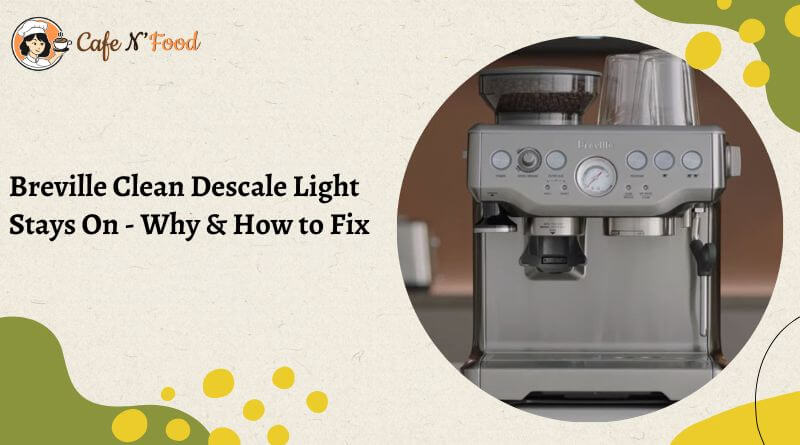Hey there! This post contains affiliate links to products. We may receive a commission for purchases made through these links. But it never influences our product selection process.
Breville is a trusted brand in the world of kitchen appliances, known for its quality and durability. But Many Breville users have reported issues that the Breville cleaning cycle not working. If you rely on your Breville appliance every day, this can be frustrating. So, what to do?
The Breville cleaning cycle may not be working because of an improper cleaning solution, a clogged spray head, or faulty sensors. To fix the problem, use the recommended solution and maintain regular cleaning or descaling. Also, ensure the spray head is not clogged. If the problem still persists, contact Breville customer service for assistance.
Here are some common reasons why your cleaning cycle may not be working, and how to fix it. Moreover, we will provide you with some helpful tips for maintaining your Breville appliance. So, let’s go on!
You may also like: Breville Barista Express Grinder Not Working – Simple Solutions!
Possible Reasons Why Breville Cleaning Cycle Is Not Working – 6 Reasons With Solutions!
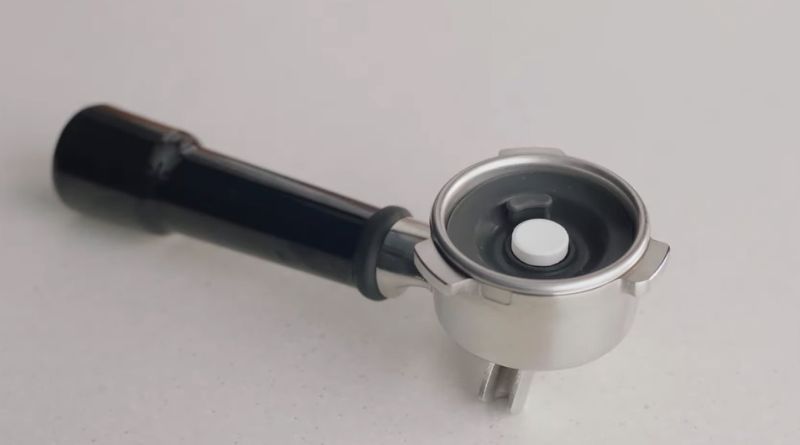
There are 6 several possible reasons why your Breville cleaning cycle is not functioning properly. Let’s check out reasons with the best solutions!
01. Breville Machine Improper Cleaning Solution:
Improper cleaning solutions can be one of the reasons why the cleaning cycle on your Breville machine is not working as expected.
Reasons:
Here are some reasons why using an improper cleaning solution can cause problems –
- Machine damage: Some cleaning solutions may contain harsh chemicals. It can damage the internal components of the Breville machine. Over time, this can lead to a malfunctioning machine or even permanent damage.
- Poor cleaning performance: Your cleaning solution may not be effective if it is not designed to remove the specific type of residue. This can lead to a machine that is not fully cleaned. It can impact the quality of your beverages.
- Residue left in the machine: The cleaning solution you are using leaves behind residue or a film on the machine. it can impact the taste and quality of your beverages.
How To Fix:
- Use recommended solutions: Always use the cleaning solution recommended by the manufacturer. Breville typically provides specific cleaning solutions that are designed to work with their appliances.
- Remove build up: Use a cleaning solution that is designed to address the specific type of buildup in your machine. For example, if your machine has a lot of coffee residue. Then, use a cleaning solution designed specifically for removing coffee buildup.
- Rinse Properly: Make sure to rinse the machine thoroughly after the cleaning cycle is complete. Use clean water to flush out any remaining cleaning solution and residue.
02. Spray Head Clogged Up:
A clogged spray head can also cause issues with the cleaning cycle on your Breville machine.
Reasons:
Here are some reasons why this can happen, and what solutions you can try:
- Coffee oils and debris can build up in the spray head over time, leading to clogs.
- Using hard water or tap water with high mineral content can cause mineral buildup in the spray head. As a result, it can lead to clogs.
How To Fix:
- Clean the spray head properly: If mineral buildup is the issue, you can soak the spray head in a solution of equal parts white vinegar and water for about 30 minutes. Then, rinse thoroughly with clean water.
- Maintain regular cleaning: Regularly descale your Breville machine to help prevent mineral buildup in the spray head and other internal components. Breville typically provides a descaling solution for this purpose.
- How To Clean Breville Head:
To clean the Breville coffee machine head, follow these steps:
Step-1: Turn off and unplug the coffee machine and allow it to cool down before cleaning. Step-2: Remove the portafilter and basket from the machine head.
Step-3: Use a dry cloth or brush to remove any loose coffee grounds from the machine head.
Step-4: Prepare a cleaning solution by mixing a commercial espresso machine cleaner with water, following the manufacturer’s instructions.
Step-5: Dip the machine head in the cleaning solution for a few minutes, making sure the solution reaches all the nooks and crannies.
Step-6: Use a soft-bristled brush to gently scrub the machine head, paying particular attention to the group head gasket and the shower screen.
Step-7: Rinse the machine head thoroughly with clean water to remove all traces of the cleaning solution.
Step-8: Use a clean cloth to dry the machine head and all the components before reassembling them.
Step-9: Run a few cycles of water through the machine head to flush out any remaining cleaning solution.
Step-10: Reattach the portafilter and basket to the machine head and test the machine to ensure it is functioning properly.
Note: Always follow the manufacturer’s instructions for cleaning and maintenance to avoid damaging your machine.
03. Back Flush Disc Problem:
If you experience backflushing issues with your Breville Machine, it may be due to an issue with the backflush disc. Choosing the wrong size disc or not having a hole in the center are two common backflushing issues.
Reasons:
Here are some reasons-
- Choosing the wrong size disc: The Breville Barista Pro uses a 54mm portafilter. So it’s crucial to choose a backflushing disc with a similar diameter. If the disc is too big or too small, it can cause issues during the flushing process. As a result, water pressure and flow are poor.
- Using a blind disc without a center hole: Modern backflushing discs do not have any holes in the center, so water and air cannot pass through. Blind discs are not recommended if your machine cannot handle excessive water pressure.
How To Fix:
- Choose The Right Disc: Make sure you choose the right backflushing disc for your portafilter. To find the right size, consult the manufacturer’s instructions or a technician.
- Use and older disc: If your machine cannot handle a blind disc, consider an older disc with a center hole. Alternatively, you can use a pressure-reducing valve or adapter to regulate water pressure.
04. Malfunctioning Pump:
A malfunctioning pump can also cause issues with the cleaning cycle on your Breville machine. You can test it by running the cleaning cycle with the pump removed. If water flows through the machine as expected, then the pump may be the issue.
Reasons:
Here are some reasons why this can happen, and what solutions you can try:
- The pump may be clogged with debris or mineral buildup, which can prevent it from functioning properly.
- The pump may be damaged or worn out, which can cause it to stop working.
How To Fix:
- Unclog Pump: Remove and clean the pump to remove any buildup or debris that may be clogging it. Breville typically provides instructions on how to do this in the user manual.
- Replace Pump: Check the pump for any signs of damage or wear, such as cracks or leaks. If the pump is damaged, it may need to be replaced.
- Regular Descale: Regularly descale your Breville machine to help prevent mineral buildup in the pump and other internal components. Breville typically provides a descaling solution for this purpose.
05. Breville Machine Faulty Sensor:
A faulty sensor is another culprit which causes issues with the cleaning cycle on your Breville machine. Usually, A sensor is an essential component in the Breville Barista Pro espresso machine. It is responsible for detecting and measuring various factors such as temperature, pressure, and water level.
Reasons:
Here are some details on these issues:
- Dirty or buildup on the sensor: Over time, the sensor in the machine can become covered with coffee oils, and other debris. It can prevent it from working correctly. This can lead to incorrect readings or no readings at all, which can cause issues with the machine’s functionality.
- Sensor damage: Frequent use, rough handling, and other factors can damage sensors over time. This can cause the sensor to malfunction, resulting in inaccurate readings or no readings at all.
How To Fix:
- Regular clean the sensor: Cleaning the sensor regularly is crucial to ensuring that it continues to function correctly. Check your machine’s manual or contact a professional technician for instructions.
- Replace the sensor: If the sensor is damaged or worn out, it will need to be replaced. Get help from a professional technician or refer to the manufacturer’s instructions.
- Reset the machine: Reset the machine by unplugging it and plugging it back in after a few minutes. This can sometimes help reset the sensor and resolve the issue.
06. Problem With The Breville Machine Valve:
The valve in an espresso machine plays a critical role in ensuring accurate water flow and generating adequate water pressure. If the valve becomes damaged or malfunctions, it can cause several issues with the machine’s. For example, your Breville descale light won’t turn off.
Reasons:
There are several reasons why a valve in an espresso machine may malfunction or become damaged. These include
- Wear and tear: Valves can become worn out or damaged over time, particularly if the machine is used frequently or roughly.
- Improper cleaning: If the valve is not cleaned regularly, it can become clogged with coffee grounds, which can impede water flow and cause damage.
How To Fix:
To address a malfunctioning valve in your Barista Pro, there are several solutions you can consider:
- Clean it with a descaling solution or a specialized cleaning agent.
- If the valve is worn out or damaged beyond repair, you may need to replace it with a new one.
- To prevent valve issues from occurring in the first place, it’s essential to perform regular maintenance on your espresso machine.
Did you know how to fix keurig won’t brew all lights on? You can check out this link to learn about the possible solutions.
How To Start Breville Cleaning Cycle
The Breville Barista Pro espresso machine comes equipped with an automatic cleaning cycle that helps to keep the machine in good working order. Here is a step-by-step process for starting the cleaning cycle:
Step-1: Remove the portafilter and any remaining coffee grounds from the group head. Empty the drip tray and the water tank.
Step-2: Fill the water tank with fresh water and add a Breville cleaning tablet to the portafilter. Use one tablet per cleaning cycle.
Step-3: Attach the portafilter to the group head and place a large container or cup under the group head.
Step-4: Turn on the machine and wait for it to heat up. Once it’s ready, press and hold the “1 CUP” and “2 CUP” buttons simultaneously for three seconds until the cleaning cycle begins.
Step-5: The machine will automatically run through the cleaning cycle, which takes about 10 minutes to complete. During this time, it will pump water through the machine to clean the various components and remove any built-up coffee oils and debris.
Step-6: Once the cleaning cycle is complete, the machine will beep three times. Turn the machine off and remove the portafilter.
Step-7: Run a clean water cycle by filling the water tank with fresh water and placing a container or cup under the group head. Press the “1 CUP” button to run water through the machine and flush out any remaining cleaning solution.
Step-8: Repeat the clean water cycle two more times to ensure that all cleaning solution has been removed from the machine.
Step-9: Once the final water cycle is complete, turn off the machine and empty the drip tray and water tank.
Frequently Asked Questions (FAQs):
What is the Breville Cleaning Cycle?
The Breville cleaning cycle is an automatic process designed to clean the Breville Barista Pro espresso machine. It removes coffee oils and debris from various components of the machine using a cleaning tablet and water. It ensures high-quality coffee drinks and machine longevity.
What is the difference between cleaning and descaling Breville?
Cleaning a Breville involves removing coffee grounds, oils and residue from the exterior and interior of the machine. On the other hand, descaling involves removing mineral buildup caused by hard water. Both processes are important for maintaining the machine’s performance and preventing damage.
How often do you clean the Breville?
It is recommended to clean your Breville coffee machine after every use. Descale it every 3 to 6 months, depending on the frequency of use and the hardness of your water.
When to Seek Professional Help?
You may need professional help at times when maintaining and cleaning your Breville machine doesn’t work. When you notice any unusual sounds, smells, leaks, or other issues that you cannot resolve by yourself. Then, it’s best to contact a qualified technician for assistance.
Final Takeaway
If you have been struggling with your Breville cleaning cycle not working, there are several steps you can take to troubleshoot and fix the issue. Start by checking the cleaning solution, descaling your machine, and ensuring that all parts and components are properly safe.
If these steps don’t work, it may be time to contact Breville customer support or seek the help of a professional technician. With a little patience and diligence, you can get your Breville machine back up and running smoothly in no time.


